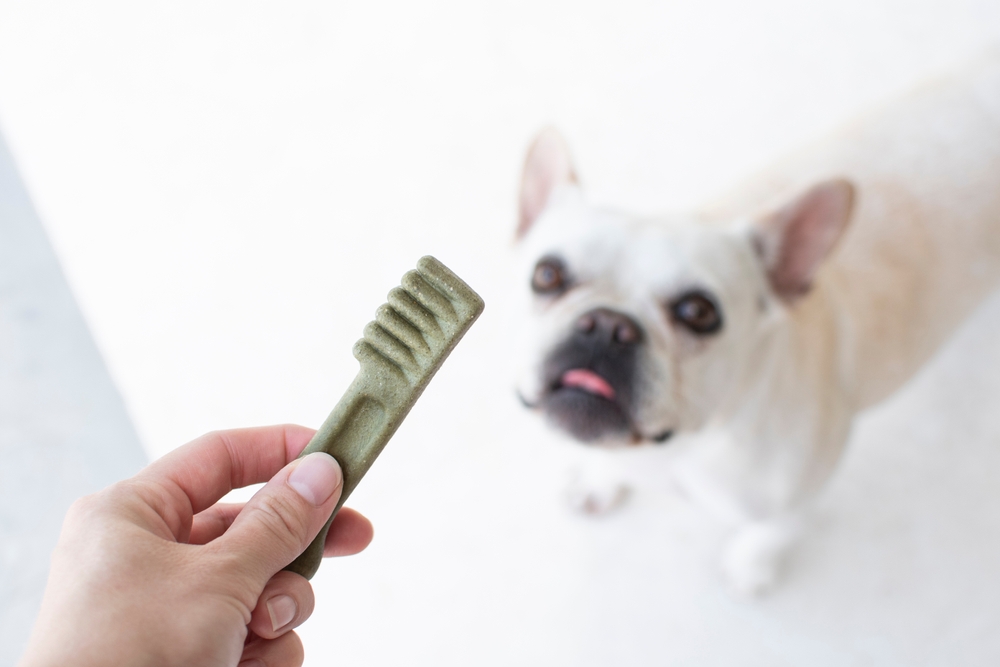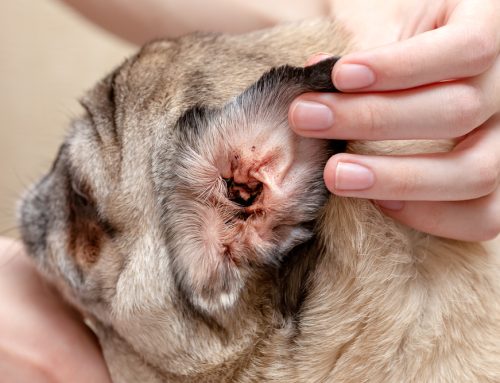You play a vital role in caring for your pet’s oral hygiene and health. Daily toothbrushing and regular wellness checkups are the basis of good dental health. Remember, your pet’s oral health is uniquely linked to their overall systemic health, connecting the quality of their dental care with their quality of life and longevity. Learn how you can keep your pet’s smile bright by reading our Countryside Veterinary Hospital team’s guide to keeping your pet’s teeth clean.
The importance of dental health in pets
Pets, like people, are subject to the perils of poor dental hygiene. Like you, your pet can suffer from issues related to tooth and gum disease such as periodontal disease. Without early oral care intervention, your pet’s dental health declines, causing plaque and tartar to wreak havoc on their teeth. Plaque and tartar buildup cause erosion of the teeth and their structural support. Bacteria flourish in this environment, leading to painful gumline pockets.
Over time, tooth and bone loss, increased pain, abscess, infection, and systemic damage to the heart, liver, and kidneys result. Clearly, proper pet dental care is more than just a fresh-smelling mouth.
How to brush your pet’s teeth
Tell the truth. On your list of favorite things to do, brushing your furry friend’s teeth is probably not included. Many pet owners are intimidated by the idea of brushing their four-legged friend’s teeth, but brushing your cat’s or dog’s teeth is vital to their well-being. To learn how to brush your pet’s teeth effectively, follow these tips to success:
- Start brushing your pet’s teeth when they are a puppy or kitten. This is the best age at which you can help them adjust to the daily toothbrushing routine.
- Keep dental supplies close at hand before initiating a toothbrushing session. You will need a small toothbrush, pet-safe toothpaste, a small towel, fresh water, and treats for rewarding positive behavior.
- Keep the first few sessions short and start by simply touching your pet’s teeth with the toothbrush.
- Once they are comfortable, lift your pet’s lips and brush the front teeth in an up-and-down, side-to-side motion.
- As your pet gets used to the sensation, move on to brushing their side teeth, including the inside.
- Reward your pet during and after toothbrushing sessions by giving them their favorite treat.
To stick to a daily routine, set a reminder each day to brush your furry friend’s teeth. You may need to devote some extra time up-front to help your pet adjust to this process, but the benefits to their dental health justify the work.
Signs your pet has dental disease
Most cats and dogs are good at hiding health changes, especially dental disease. Take the time to investigate your pet’s mouth each day. Although you and your pet may not enjoy a daily oral check, doing so helps you spot the following dental disease signs:
- Halitosis or bad breath
- Favoring one side when chewing
- Difficulty eating
- Red, inflamed gums
- Bleeding from the gums or a red line at the gumline
- Salivating more than normal
- Plaque or tartar on the teeth, which appears as a grey or tan film on tooth surfaces
- Facial swelling
- Loose or missing teeth
If these signs are present, schedule your pet’s professional dental examination with our Countryside Veterinary Hospital team. Early detection is paramount to stopping or slowing periodontal disease progression.
Additional tips to keep your pet’s teeth clean

To maintain your pet’s oral health, they should have regular professional dental examinations. The American Animal Hospital Association (AAHA) recommends regular dental examinations and dental cleaning under anesthesia. These should be started at 1 year of age for cats and small-breed dogs and at 2 years of age for large breeds.
Along with daily toothbrushing, you can use other dental care methods. To help prevent plaque and tartar buildup on your pet’s teeth, follow these tips:
- Dental treats and chews — Give your pet dental treats and chews that have the Veterinary Oral Health Council (VOHC) seal of acceptance on the packaging. These products contain enzymatic ingredients that help remove plaque from the teeth’s surface.
- Dental wipes — Wipes can be used to supplement toothbrushing, but they are not as effective. In conjunction with brushing, dental wipes help remove some soft plaque from your pet’s teeth.
- Dry dental diets — Specialized dental diets help prevent pets’ dental disease. Ask our team to recommend the best diet for your four-legged friend.
In celebration of National Pet Dental Health Month, take a close look at your pet’s pearly whites. Even if your furry pal’s smile looks bright, schedule their routine dental examination with our Countryside Veterinary Hospital team to help ensure their teeth are healthy right down to the roots.








Leave A Comment